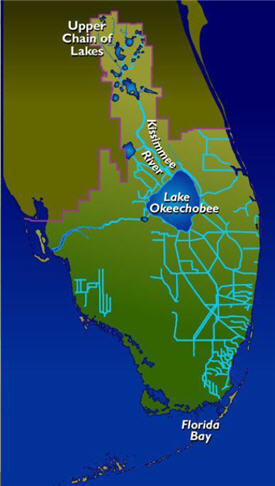
Here in South Florida, water is everywhere - the Everglades; miles of beaches; heavy rains in the summer. But have you ever considered what happens to stormwater when it rains? Do you know how the rain that falls on your yard and in your neighborhood is carry away? Where does it go and how does it get there?
Broward County is one of 16 counties within the South Florida Water Management District (SFWMD.) More than 2,100 miles of canals and levees, water control structures and pump stations make up this regional water management system – one of the largest in the world. This regional system conveys excess water into storage areas or out to the ocean.
The SFWMD operates the regional flood control system: 2,100 miles of canals, 2,000 miles of levees, 600 structures, 625 culverts and 70 pumping stations.
